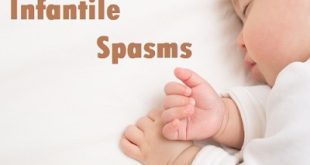What Is Apraxia?
Apraxia is a poorly understood neurological condition. People who have it find it difficult or impossible to make certain motor movements, even though their muscles are normal. Milder forms of apraxia are known as dyspraxia.
Apraxia can occur in a number of different forms. One form is orofacial apraxia. People with orofacial apraxia are unable to voluntarily perform certain movements involving facial muscles. For instance, they may not be able to lick their lips or wink. Another form of apraxia affects a person’s ability to intentionally move arms and legs.
With apraxia of speech, a person finds it difficult or impossible to move his or her mouth and tongue to speak. This happens, even though the person has the desire to speak and the mouth and tongue muscles are physically able to form words.
Types
Different types of apraxia affect the body in slightly different ways:
Limb-kinetic apraxia
People with limb-kinetic apraxia are unable to use a finger, arm, or leg to make precise and coordinated movements. Although people with limb-kinetic apraxia may understand how to use a tool, such as a screwdriver, and may have used it in the past, they are now unable to carry out the same movement.
Ideomotor apraxia
People with ideomotor apraxia are unable to follow a verbal command to copy the movements of others or follow suggestions for movements.
Conceptual apraxia
This form of apraxia is similar to ideomotor apraxia. People with conceptual apraxia are also unable to perform tasks that involve more than one step.
Ideational apraxia
People with ideational apraxia are unable to plan a particular movement. They may find it hard to follow a sequence of movements, such as getting dressed or bathing.
Buccofacial apraxia
People with buccofacial apraxia, or facial-oral apraxia, are unable to make movements with the face and lips on command.
Constructional apraxia
People with constructional apraxia are unable to copy, draw, or construct basic diagrams or figures.
Oculomotor apraxia
Oculomotor apraxia affects the eyes. People with this type of apraxia have difficulty making eye movements on command.
Verbal apraxia
People with verbal or oral apraxia find it challenging to make the movements necessary for speech. They may have problems producing sounds and understanding rhythms of speech.
Causes
Apraxia is caused by damage to the brain. When apraxia develops in a person who was previously able to perform the tasks or abilities, it is called acquired apraxia.
The most common causes of acquired apraxia are:
- Brain tumor
- The condition that causes gradual worsening of the brain and nervous system (neurodegenerative illness)
- Dementia
- Stroke
- Traumatic brain injury
Apraxia may also be seen at birth. Symptoms appear as the child grows and develops. The cause is unknown.
Apraxia of speech is often present along with another speech disorder called aphasia. Depending on the cause of apraxia, a number of other brain or nervous system problems may be present.
Risk Factors
Apraxia may be due to stroke. Stroke is more common in older adults.
Factors that may increase your risk of stroke include:
- Prior stroke or cardiovascular disease
- Prior transient ischemic attack (TIA)
- High blood pressure
- High cholesterol
- Diabetes
- Smoking
- Dialysis treatment, which takes over the job of the kidneys when they fail
Symptoms
A person with apraxia is unable to put together the correct muscle movements. At times, a completely different word or action is used than the one the person intended to speak or make. The person is often aware of the mistake.
Symptoms include:
- Distorted, repeated, or left out speech sounds or words. The person has difficulty putting words together in the correct order.
- Struggling to pronounce the right word
- More difficulty using longer words, either all the time or sometimes
- Ability to use short, everyday phrases or sayings (such as “How are you?”) without a problem
- Better writing ability than speaking ability
Other forms of apraxia include:
- Buccofacial or orofacial apraxia. Inability to carry out movements of the face on demand, such as licking the lips, sticking out the tongue, or whistling.
- Ideational apraxia. Inability to carry out learned, complex tasks in the proper order, such as putting on socks before putting on shoes.
- Ideomotor apraxia. Inability to voluntarily perform a learned task when given the necessary objects. For instance, if given a screwdriver, the person may try to write with it as if it were a pen.
- Limb-kinetic apraxia. Difficulty making precise movements with an arm or leg. It becomes impossible to button a shirt or tie a shoe.
Possible Complications
Having apraxia may lead to:
- Learning problems
- Low self-esteem
- Social problems
Diagnosis and tests
To diagnose apraxia, a doctor will look at a person’s full medical history and consider all of their symptoms to identify any underlying causes. They may also be looking to rule out similar conditions, such as motor weakness, aphasia, or dyspraxia.
A doctor may carry out a variety of tests to assess:
- Verbal and nonverbal communication
- How people participate and function in certain activities
- Coordination
- Hearing and listening abilities
Tests may include both physical tests to measure motor coordination skills and language tests to check the ability to understand commands.
Tests may include:
Hearing tests. Your doctor may order hearing tests to determine if hearing problems could be contributing to your child’s speech problems.
Oral-motor assessment. Your child’s speech-language pathologist will examine your child’s lips, tongue, jaw, and palate for structural problems, such as tongue-tie or a cleft palate, or other problems, such as low muscle tone. Low muscle tone usually isn’t associated with CAS, but it may be a sign of other conditions.
Your child’s speech-language pathologist will observe how your child moves his or her lips, tongue and jaw in activities such as blowing, smiling and kissing.
Speech evaluation. Your child’s ability to make sounds, words and sentences will be observed during play or other activities.
Your child may be asked to name pictures to see if he or she has difficulty making specific sounds or speaking certain words or syllables.
Treatment
People with apraxia can benefit from treatment by a health care team. The team should also include family members.
Occupational and speech therapists play an important role in helping both people with apraxia and their caregivers learn ways to deal with the disorder.
During treatment, therapists will focus on:
- Repeating sounds over and over to teach mouth movements
- Slowing down the person’s speech
- Teaching different techniques to help with communication
Recognition and treatment of depression are important for people with apraxia.
To help with communication, family and friends should:
- Avoid giving complex directions.
- Use simple phrases to avoid misunderstandings.
- Speak in a normal tone of voice. Speech apraxia is not a hearing problem.
- DO NOT assume that the person understands.
- Provide communication aids, if possible, depending on the person and condition.
Other tips for daily living include:
- Maintain a relaxed, calm environment.
- Take time to show someone with apraxia how to do a task, and allow enough time for them to do so. DO NOT ask them to repeat the task if they are clearly struggling with it and doing so will increase frustration.
- Suggest other ways to do the same things. For example, buy shoes with a hook and loop closure instead of laces.
If depression or frustration is severe, mental health counseling may help.
Prognosis
The prognosis for individuals with apraxia varies. With therapy, some patients improve significantly, while others may show very little improvement. Some individuals may benefit from the use of a communication aid. However, many people with apraxia are no longer able to be independent. Those with limb-kinetic and/or gait apraxia should avoid activities in which they might injure themselves or others.
Occupational therapy, physical therapy, and play therapy may be considered as other references to support patients with apraxia. These team members could work along with the SLP to provide the best therapy for people with apraxia. However, because people with limb apraxia may have trouble directing their motor movements, occupational therapy for stroke or other brain injuries can be difficult.
No medication has been shown useful for treating apraxia.
 Diseases Treatments Dictionary This is complete solution to read all diseases treatments Which covers Prevention, Causes, Symptoms, Medical Terms, Drugs, Prescription, Natural Remedies with cures and Treatments. Most of the common diseases were listed in names, split with categories.
Diseases Treatments Dictionary This is complete solution to read all diseases treatments Which covers Prevention, Causes, Symptoms, Medical Terms, Drugs, Prescription, Natural Remedies with cures and Treatments. Most of the common diseases were listed in names, split with categories.








please,what is the cures?
Speech therapy is the only cure.